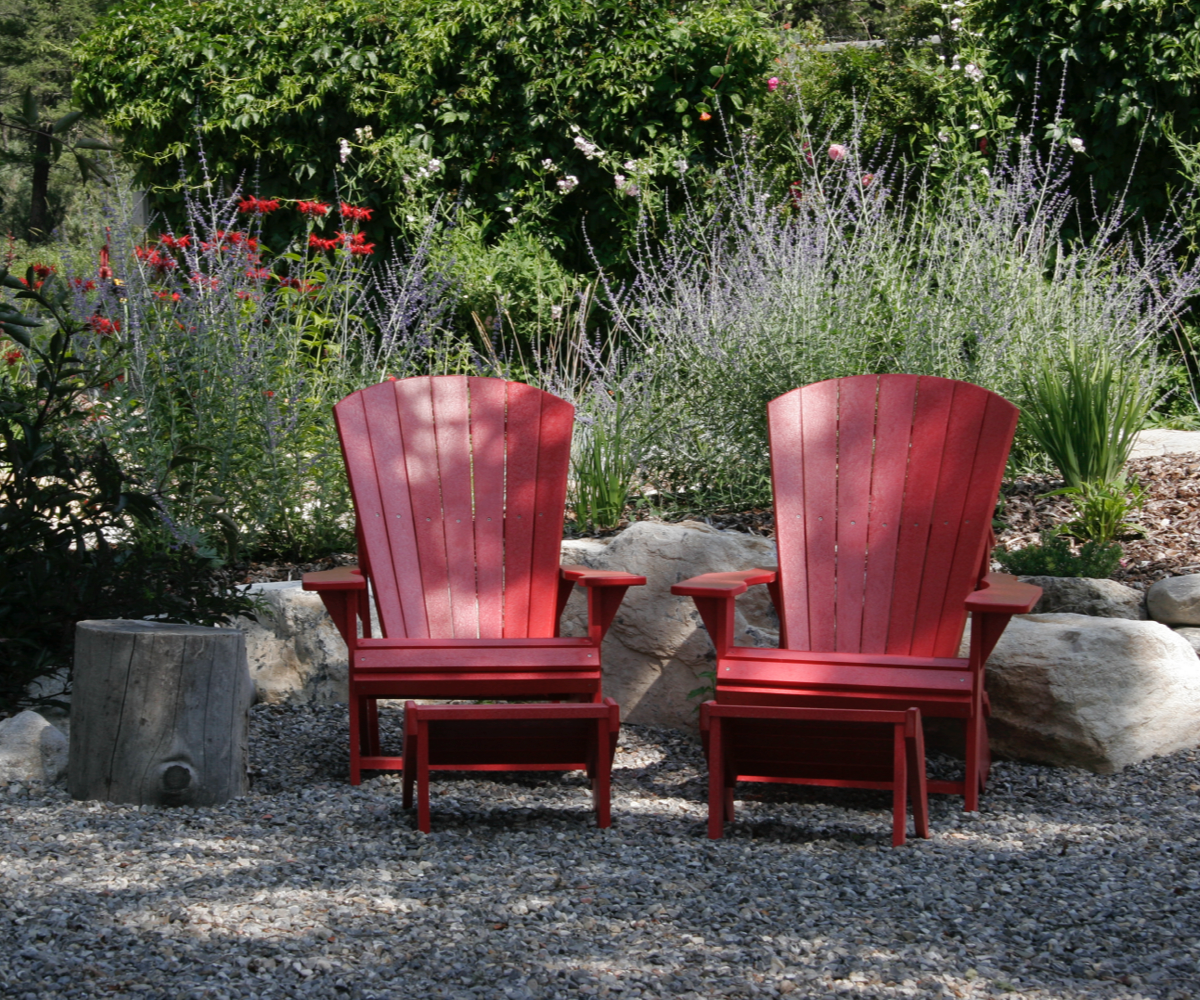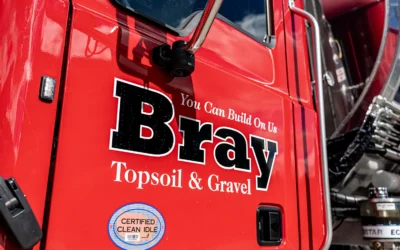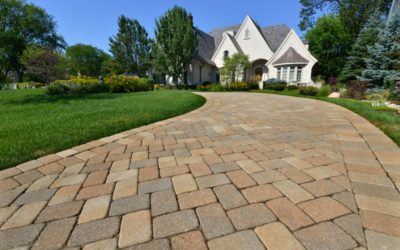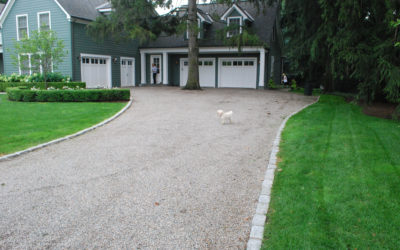Landscaping is not just about planting beautiful flowers and trees. It requires careful consideration of the soil and materials used to create a sustainable and visually appealing outdoor space. Two essential components that often go unnoticed but play a crucial role in landscaping are topsoil and gravel. In this comprehensive guide, we will explore the benefits of using topsoil and gravel in landscaping, providing you with the knowledge to create a beautiful and long-lasting landscape.
Understanding Topsoil: The Foundation of a Vibrant Landscape
Topsoil is the uppermost layer of soil, typically ranging from 2 to 8 inches in depth. It is rich in organic matter, including decomposed roots, leaves, and bugs, making it darker and more nutrient-dense than the layers below. The organic matter in topsoil provides essential nutrients for plants, promoting healthy growth and vibrant colors in your landscape.
Importance of Nutrient-Rich Soil
Topsoil acts as a reservoir of nutrients for plants, ensuring they have access to the necessary elements for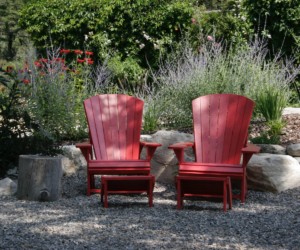 their growth and development. The organic matter in topsoil breaks down over time, releasing nutrients such as nitrogen, phosphorus, and potassium, which are essential for plant health. By providing a layer of nutrient-rich soil, you can create an environment that supports the growth of lush lawns, vibrant flowers, and thriving trees.
their growth and development. The organic matter in topsoil breaks down over time, releasing nutrients such as nitrogen, phosphorus, and potassium, which are essential for plant health. By providing a layer of nutrient-rich soil, you can create an environment that supports the growth of lush lawns, vibrant flowers, and thriving trees.
Enhancing Drought Resistance
In regions with hot and dry climates, water conservation is of utmost importance. Topsoil plays a significant role in enhancing drought resistance in your landscape. It acts as a moisture retainer, preventing water from evaporating quickly and allowing it to penetrate deeper into the soil. This ensures that your plants have access to the water they need, even during periods of limited rainfall.
Improving Drainage and Preventing Erosion
Proper drainage is crucial for maintaining healthy plants and preventing soil erosion. Topsoil, with its loose and porous structure, allows water to drain efficiently, preventing waterlogging and root rot. Additionally, the addition of topsoil helps anchor the soil, reducing the risk of erosion caused by heavy rain or wind. This is particularly important for slopes and areas prone to runoff.
Creating a Lush and Uniform Lawn
A lush, green lawn is often the centerpiece of a beautiful landscape. However, maintaining a healthy lawn can be challenging, especially in areas with poor soil quality. By incorporating topsoil into your lawn, you can improve its overall health and appearance. Topsoil provides a fertile foundation for grass to establish deep roots, ensuring better nutrient absorption and improved resilience to environmental stressors.
Unleashing the Potential of Gravel: Versatile and Aesthetic Landscaping Material
Gravel is another versatile material that can transform your landscape into a visually striking and low-maintenance outdoor space. Let’s explore the various benefits of using gravel in your landscaping projects.
Excellent Base Material for Hardscaping
Gravel serves as an excellent base material for various hardscaping installations, such as patios, walkways, and rock gardens. Its stability and durability make it an ideal choice for creating a solid foundation. Unlike mulch, gravel requires minimal upkeep and provides a more uniform look, especially when used for seating areas or as a base for decorative elements.
Adding Creative Flair and Texture
Incorporating gravel into your landscape design can add a touch of creativity and texture. By lining walkways, flower beds, or ornamental rocks with gravel, you can enhance the aesthetic appeal of your yard. Gravel comes in a variety of colors and sizes, allowing you to create unique patterns and combinations that complement your plants and flowers. Its versatility allows for endless design possibilities, from casual and natural to contemporary and modern.
Lawn-Free Landscaping Solution
For those looking for an alternative to traditional grass lawns, gravel can be a game-changer. By replacing grass with a mix of natural stones and pea gravel, you can create a low-maintenance and visually appealing landscape. Gravel requires minimal watering and mowing, saving you time and reducing water consumption. Additionally, gravel can provide better drainage, preventing waterlogged areas and promoting healthy plant growth.
Cost-Effective and Long-Lasting
Gravel is a cost-effective landscaping material, offering long-lasting benefits for your outdoor space. Unlike mulch or sod, gravel does not rot or decompose, making it a durable option that can withstand the test of time. Its longevity makes it an economical choice, especially when purchasing and storing materials in bulk. Whether you need gravel for a small garden bed or a large-scale landscaping project, it offers excellent value for your investment.
Selecting the Right Topsoil and Gravel for Your Landscape
Now that we’ve explored the numerous benefits of using topsoil and gravel in landscaping, it’s essential to understand how to select the right materials for your specific needs. Here are some considerations to keep in mind when choosing topsoil and gravel for your landscape:
Quality and Composition
When purchasing topsoil, it’s crucial to assess its quality and composition. Look for topsoil that is free from contaminants, rocks, and debris. It should have a balanced composition of sand, silt, and clay, providing an ideal growing environment for plants. Additionally, consider whether you need straight topsoil or a mixture with added amendments such as compost or sand, depending on your specific soil needs.
For gravel, consider the size and type that best suits your design aesthetic and functional requirements. River rock, pea gravel, and cobblestones are popular options that provide different textures and colors. Choose gravel that complements your overall landscape design and enhances the visual appeal of your outdoor space.
Quantity and Delivery
Before purchasing topsoil or gravel, accurately measure the area you need to cover to determine the quantity required. Ordering slightly more than you estimate is advisable to ensure complete coverage. When arranging delivery, consider the accessibility of your property and specify any specific instructions for placement. Ensure that the supplier can meet your delivery requirements and provide the quantity needed for your project.
Local Sourcing and Sustainability
Opting for locally sourced topsoil and gravel supports the local economy and reduces transportation emissions. Local suppliers can provide materials that are specifically suited to your region’s climate and soil conditions. Additionally, consider the sustainability of the materials by choosing suppliers that practice responsible sourcing and extraction methods.
Creating a Beautiful and Sustainable Landscape with Topsoil and Gravel
Incorporating topsoil and gravel into your landscaping projects can yield numerous benefits for your outdoor space. Topsoil provides essential nutrients, improves drought resistance, enhances drainage, and prevents erosion. Gravel, on the other hand, offers versatility, aesthetic appeal, and a low-maintenance alternative to traditional lawns. By carefully selecting the right topsoil and gravel for your landscape, you can create a beautiful and sustainable outdoor environment that thrives for years to come.
Whether you’re looking to establish a lush lawn, create stunning hardscapes, or add unique textures to your landscape design, topsoil and gravel are indispensable materials that can elevate your outdoor space. Embrace the benefits of topsoil and gravel, and embark on a journey to transform your landscape into a visually captivating and environmentally conscious haven.
Request a Quote (859-635-5680) And We Will Contact You Shortly!
Calculate How Much Material You Need For Your Project
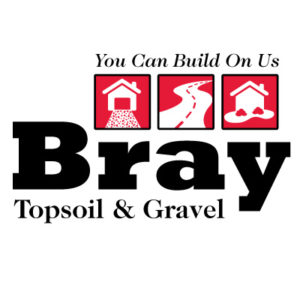
—
About Bray Topsoil & Gravel
Topsoil and gravel delivered to you by Bray Trucking, a specialized aggregate hauler servicing the Kentucky, Ohio, and Indiana region.
>>Learn More

